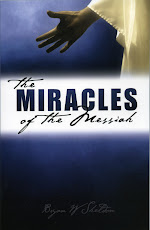The sign of Jonah required a resurrection from the grave. Jonah returned from the dead. “You have brought up my life from the pit, O LORD my God” (Jonah 2:6). Therefore, Jesus must return from the dead. A Messianic Psalm says, “For You will not leave my soul in Sheol, nor will You allow Your Holy One to see corruption” (Ps.16:10). Paul quoted it in Antioch, and applied it to the resurrection of the Messiah, and had it in his mind’s eye when he wrote to the Church at Corinth, “Christ … rose again the third day according to the scriptures” (1 Cor.15:3,4).
Jesus of Nazareth rose from the dead. A mighty movement in the earth’s crust attended the ascent of the Messiah from Hades: “Behold, there was a great earthquake; for an angel of the Lord descended from heaven, and came and rolled back the stone from the door, and sat on it” (Matt.28:2) There were multiples of the sign of the prophet Jonah, i.e. saints returning from Hades (Abraham’s bosom): “Graves were opened; and many bodies of the saints who had fallen asleep were raised; and coming out of the graves after His resurrection, they went into the holy city and appeared to many” (Matt.27:52,53).
The Sadducees who denied the doctrine of the resurrection must have been much perplexed. In life, Jesus sent them multiples of the leprous ‘living dead’ who had been restored from their pitiable condition. Now in death He sent them multiples of those who had been actually dead but were now living again. Jesus, the Messiah, gave the Sadducees, who knew neither the power of God nor the Scriptures, one unforgettable lesson.
The disciples, during their time with Jesus, struggled to understand the teaching of His personal resurrection. For example Mark tells us: “He gave them orders not to relate to anyone what they had seen, until the Son of Man rose from the dead. They seized upon that statement, discussing with one another what was the rising from the dead” (Mark 9:9,10 (NASB)). But it was clearly important that they should grasp it. On several other occasions He prophesied: “Behold, we are going up to Jerusalem, and the Son of Man will be betrayed to the chief priests and to the scribes; and they will condemn Him to death, and deliver Him to the Gentiles to mock and to scourge and to crucify. And the third day He will rise again” Matt.20.18,19; cf 16.21; 17.22,23). In another place He speaks of His resurrection as taking up His life again; “Therefore My Father loves Me, because I lay down My life that I may take it again. No one takes it from Me, but I lay it down of Myself. I have power to lay it down, and I have power to take it again. This command I have received from My Father” (John 10:17,18). Here He separated two of the aspects of His rising from the dead: (i) He had the freedom and the ability to return from Hades; (ii) He had a charge from the Father to make that choice: “This command I have received from My Father”. The harmony that is in the Godhead is emphasised here, and those Scriptures that state that God raised Him from the dead are further illuminated by the Messiah’s own teaching. The Father gave the Son to death and the Son gave Himself. The Father would raise the Son and the Son would raise Himself.
“But now Christ is risen”, for: “He … presented Himself alive after His suffering by many infallible proofs, being seen by them during forty days and speaking of the things pertaining to the kingdom of God” (Acts 1:3). There are ten recorded resurrection appearances over a period of almost six weeks.
(i) To Mary of Magdala. (John 20:14 ff)
(ii) To others of the women. (Matt.28:9,10)
(iii) To Peter on his own. (Luke 24.34; 1 Cor.15.5)
(iv) To the two on the road to Emmaus. (Luke 24:13 ff)
(v) To a group of disciples when Thomas was absent. (Luke 24:36 ff)
(vii) To the seven disciples by the Lake. (John 21:1 ff)
(viii) To a company of more than 500, in Galilee. (1 Cor. 15:6)
(ix) To James, the half-brother of the Lord. (1 Cor. 15:7)
(x) To those who witnessed the ascension. (Luke 24.50,51; Acts 1.9)
Post-Ascension Appearances
(i) To Stephen: (Acts 7:56)
(ii) To Paul: (Acts 9:3 ff)
Next Time: The Importance of the Resurrection Appearances to the Disciples






No comments:
Post a Comment